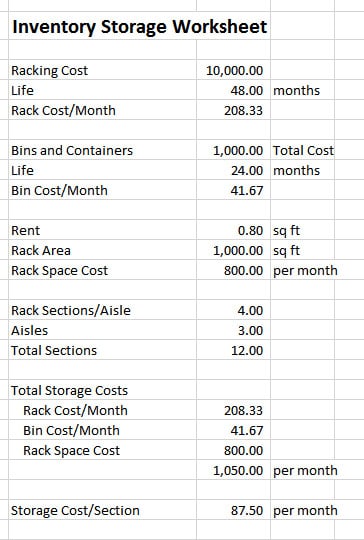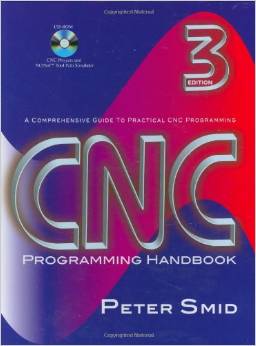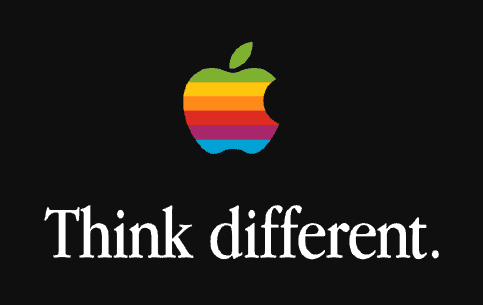2 months by cncdivi
Have you ever seen the Seinfeld skit about the Soup Nazi? It seems there’s a little deli that has the most amazing soup. There’s just one little problem: the owner is the Soup Nazi. If he doesn’t like the way you’re trying to do business, he immediately refunds your money and announces loudly, “No soup for you!”
[youtube=http://www.youtube.com/watch?v=7WRxEY8o3kc&w=425&h=344]
Every business needs a Polite Soup Nazi…
The Soup Nazi is clearly a comedic spoof, but in the end of the day, every business really does need to have a Polite Soup Nazi. If you don’t have one, how else can you fire a customer? I can already hear the cries of protest:
What?!?? Why would you ever fire a customer?
We’re brought up hearing that the customer is always right and generally that we should do anything, no matter how unreasonable to make customers happy. But, it turns out, this is actually bad advice. What’s really needed is to be unreasonably helpful to good customers, and to be quick, polite, and effective at helping bad customers to realize they probably want someone else’s product.
You’ve probably encountered Internet Trolls, right? Wikipedia offers this definition:
A troll is someone who posts inflammatory, extraneous, or off-topic messages in an online community, such as an online discussion forum, chat room, or blog, with the primary intent of provoking readers into an emotional response or of otherwise disrupting normal on-topic discussion.
We’ve all had customers act in inflammatory, extraneous, or off-topic ways in order to provoke an emotional response either for their own entertainment, because they’re having a bad day, or simply to gain a negotiating advantage. Do you want trolls for customers? Heck, I understand a bad day, but trying to provoke an emotional response for negotiating advantage is something I can live without.
Bob, you’re crazy. Who fires customers?
You’ll find lots of articles on this subject from reasonable sources ranging from BusinessWeek magazine to Harvard Business School to the blogs of various marketing experts. Just Google for “firing a customer”. Reasons to consider firing a customer include:
– The cost to make the customer happy is much higher than the cost of losing their business.
– The customer is being consistently unreasonable in ways that just drive you too the point of concluding life is too short.
– Customers who are clearly looking for something radically different than what your product delivers, but who want to aggressively make the case that you should listen to them and change your product because they’re an expert or “a lot of people obviously feel the same way”.
– A whole host of other problems that cause you to incur inordinate costs, spend too much energy, etc. Always being very late paying the bills. Yelling, screaming, or being threatening. Always being extremely negative, critical, or nagging.
Yeah, but if I fire all my customers, who pays the bills?
Having a healthy and objective attitude about firing certain customers is not a manner of turning away every customer that is demanding or occasionally unreasonable. As I said, you actually want to try to be unreasonably helpful to good customers. They’re the ones who will appreciate that service and for whom the karma involved will net back a return that makes it worthwhile. But, you’re also entitled to enjoy your business at some level.
By now, you’re still wondering, “But what about the customer, what are they entitled to?”
That’s a good point. Some of the customers you should fire just make a career out of being unreasonable. They know that the squeaky wheel can get a little extra grease. You’ll have to decide for yourself how to deal with that category. But a lot of the customers you should fire have a legitamate beef. They really are unhappy and they’re telling you so. They’re probably even reasonable to be unhappy. However, what you need to do to be successful with your business will not make them happy. For example, because you don’t have the product they really wanted, and you’re not planning to start selling it.
In those cases, you’re doing the customer a favor by helping them to realize as soon as possible that you don’t have the answer that will make them happy.
What’s your policy for firing customers?
First is to have some good idea of what good reasons are why customers are legitimately unhappy that you can’t fix. Put another way, which problems are you explicitly not going to solve for your customers. For example, at CNCCookbook there is a short list of things that we hear about from time to time that we don’t plan to change:
– We want our products connected to the Internet. People often think that is a function of license keys and copy protection, but it actually has little to do with that and everything to do with my view that the world is becoming an increasingly connected and online place and that there is a lot a product can do when it has a connection that’s not possible when it doesn’t.
– We want to sell a subscription and not sell the software outright. We do this for all sorts of reasons we explain on our About page. Our subscription policy, together with our prices, means we’re behind our competitors in revenue for several years before we catch up, but we believe in doing business this way and don’t plan to change it.
– We’re not trying to sell the cheapest, we’re trying to sell the best. Maybe it’s not the best to you, but a substantial majority of our customers think it is the best for them.
I could go on, but you get the idea.
Second thing to do is to think about the more intangible reasons you might fire a customers. For example, we view our customers as being part of a community. If we knew each of them better, we’d be friends. I spend hours every week exchanging email with all sorts of folks who ask questions, whether or not they have even purchased any of our software. I enjoy doing it and it helps folks to learn. Send me any sort of reasonable question about machining, ask nicely, don’t abuse the opportunity, and I’ll work hard to get you back an answer. I want to be motivated to do that. We both have the same interests in machining. We have a mutual respect. Hey, if we knew each other better, we’d go out for a beer or cup of coffee to share some machining stories. When I get a note from someone who starts the conversation out in a way that seems abusive, I start wondering whether to respond as the Polite Soup Nazi.
How does one go about firing a customer?
The best thing to do is make sure you’re communicating clearly what a good customer is so that bad customers don’t even try to sign up. Don’t hide the details of your product in hopes someone will call with a question and then you can work on selling them. Get it all out there. The best customers will know themselves whether they should buy your products if you arm them with the information to make a good decision. If there are certain topics that many customers run afoul of, think about how to get those topics out there so that would-be customers can figure out where you stand on the issues ahead of time–that’s one reason I’m writing this article. It’s much better to have someone who will turn out to be a bad customer decide not to even start down the road of being a customer after reading the information your provide.
Inevitably, some will slip through, or more likely they’ll come barging in brashly and loudly the way Customer Trolls do, having ignored your cues, and demanding something or other you’re not prepared to give. If I discover that a paying customer is a customer I should fire, I cheerfully refund all of their money, no matter how much value they may have extracted along the way, and we move on. Incidentally, this has only happened once that I can recall for CNCCookbook.
If we’re talking about a prospective customer, and no money has changed hands, but it becomes obvious in the initial communications they’re not a good fit (too abusive, looking for a different product, etc.), I will cheerfully direct them to my favorite competitors. By favorite, I mean the competitors that have the best products. There are some excellent competitors in the areas I work in, and I have communicated with most of them. They’re good people, their products are different than mine, and I can recommend them without reservation to anyone. For CNCCookbook, the most important thing is to move a customer that’s a bad fit somewhere where they can be happier as smoothly as possible.
How often will I have to fire a customer?
I mentioned the full refund has only happened once. I credit that, BTW, to being willing to steer people away if I suspect problems up front.
The Harvard Business Review article I linked above has a good anecdote:
Some years ago, when our venture firm was starting one of its first retail ventures, I met with a highly successful CEO in the retail services industry to better understand how he did so well across all of his stores (he had some mind-blowing numbers). It was abundantly clear when you walked into any of his stores that his customers were genuinely delighted. I asked him for his secret. His response surprised me and has therefore stuck with me: “When we open a new location we quickly grow to a database of 8,000 customer names — and then work hard to get it down to 1,500 names.”
That retail services CEO was firing the majority–out of 8000, he only wanted to keep 1500. Therefore he fired 80%!
I can’t go that aggressively into firing customers. I’m not shy about it for financial reasons, but just emotionally, I find I like most people. I’ve kept track of it, and at CNCCookbook, I probably get 1 customer that I send to the competition every 2-3 weeks. That’s about 0.3%. If the HBR anecdote above is any indication, I should probably fire more customers.
Firing customers makes a lot of sense if you think about it. The customer has a chance to be happier. You have a chance to be happier. But, most importantly, the customers you keep are customers you really want to work hard for and who love your products. How do you go wrong with that win-win situation?
Like what you read on CNCCookbook?
Join 100,000+ CNC'ers! Get our latest blog posts delivered straight to your email inbox once a week for free. Plus, we’ll give you access to some great CNC reference materials including:
- Our Big List of over 200 CNC Tips and Techniques
- Our Free GCode Programming Basics Course
- And more!
Just enter your name and email address below:
100% Privacy: We will never Spam you!

Bob is responsible for the development and implementation of the popular G-Wizard CNC Software. Bob is also the founder of CNCCookbook, the largest CNC-related blog on the Internet.










Haven’t been to your site in awhile. I will have to drop by more often.
I agree with the idea of ‘firing’ a customer even though I have been on the bad end of such an action. My last job was for a small design and production outfit. We had one customer who had great potential–a large presence in their industry and the ability to sell a bunch of the relabelled machines we made for them.
They were also cranky SOBs who were constantly changing the rules of the game, and seemed to enjoy kicking us in our metaphorical shins on a regular basis. Late last year they offered us a five million dollar contract, about one fifth of the company’s gross revenue. Unfortunately, when the numbers were run it worked out to a net loss on each machine. Between that and the constant BS, the owners turned down the contract. Unfortunately, the loss of 22% of their business meant they had to cut back. I was the shop’s jack of all trades, and they wouldn’t need my prototyping capabilities, so I was laid off. Even so, I believe their decision was right. To paraphrase the bible, “For what will it profit a man if he gains the whole world and forfeits his sanity?” Working with these people took all the fun out building machines, my chosen trade, and engineering design, the owners’ chosen careers.
Jim, sorry to hear you were a victim of it. It does sound like the customer your firm had to “fire” fits the profile though.